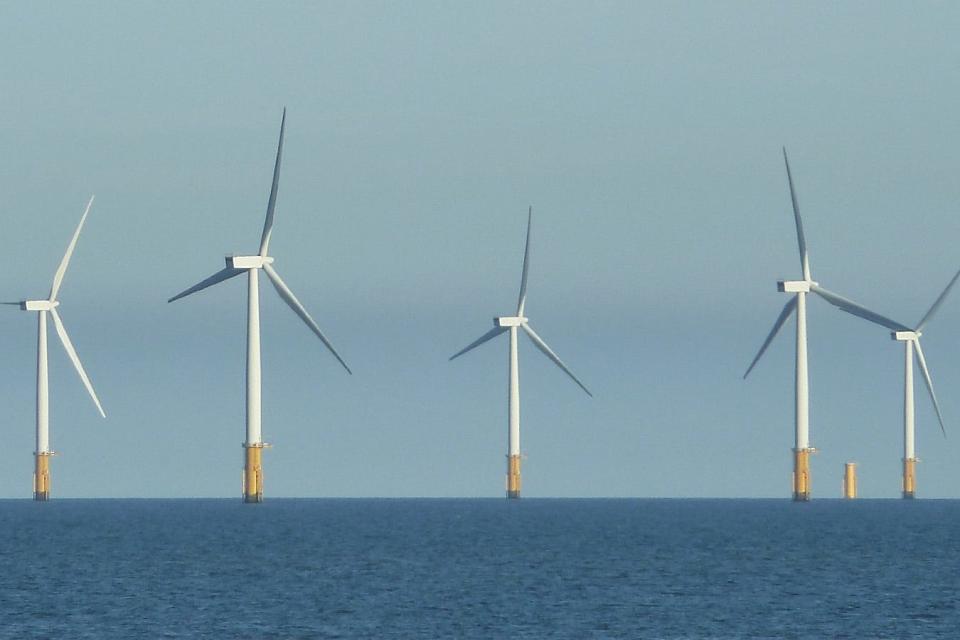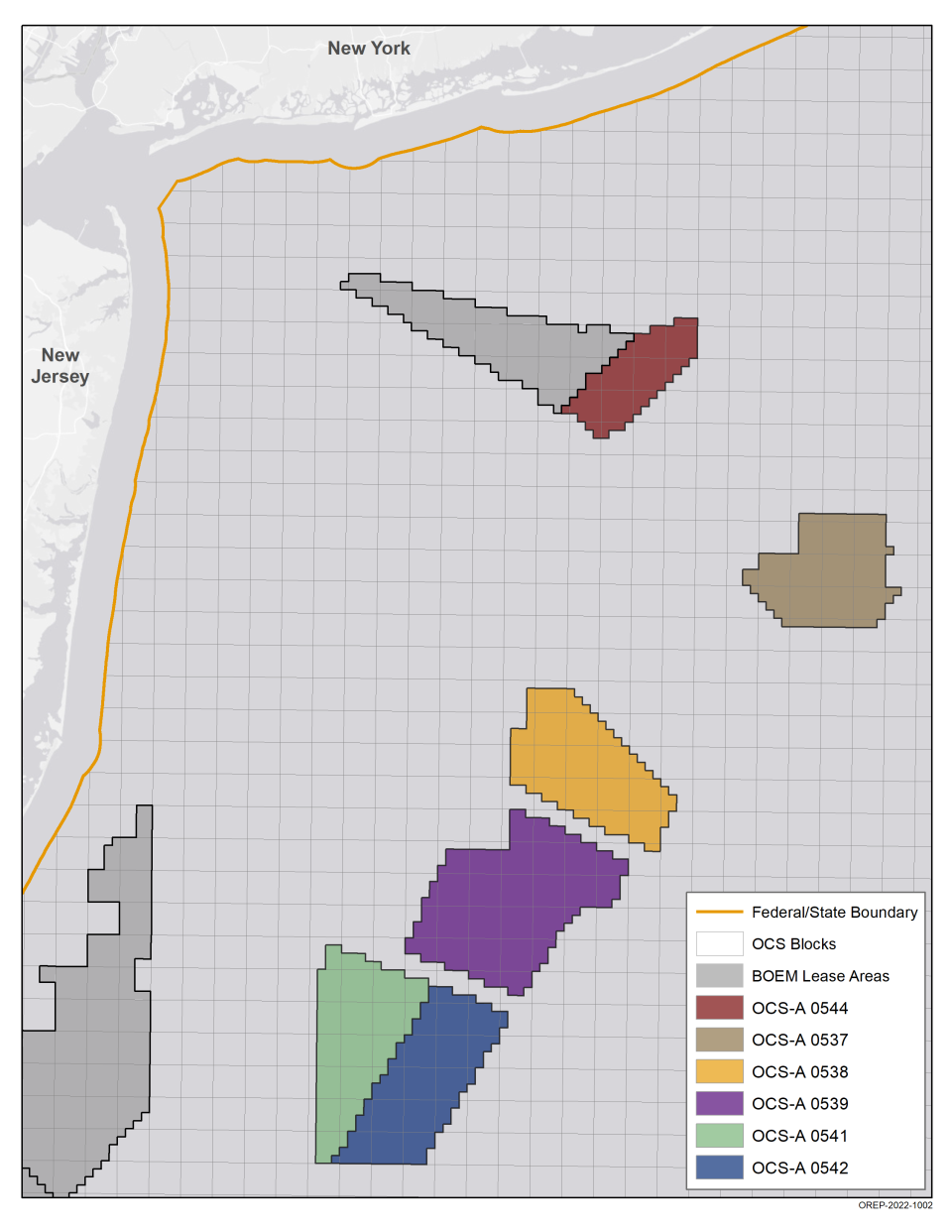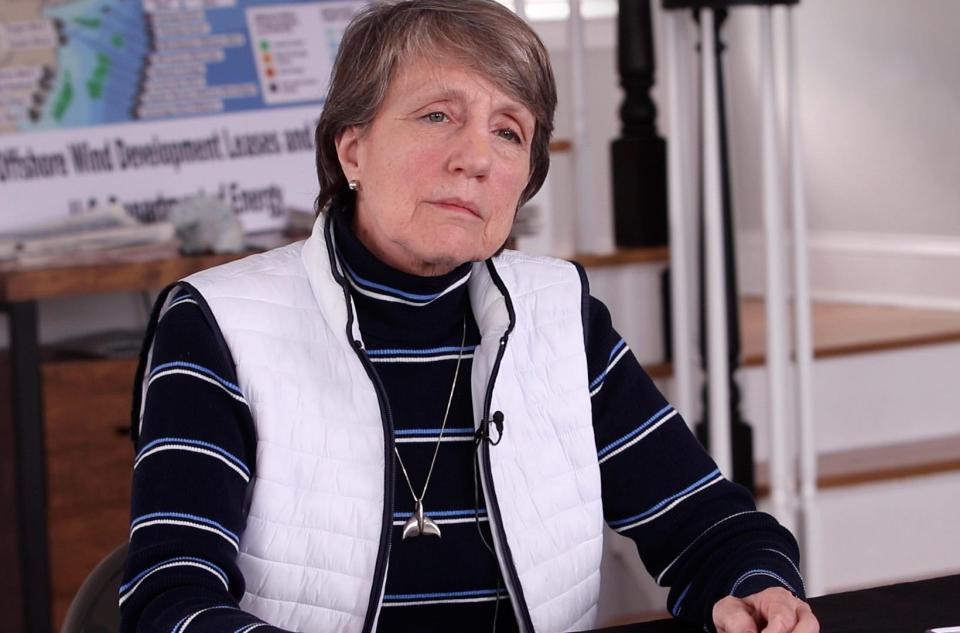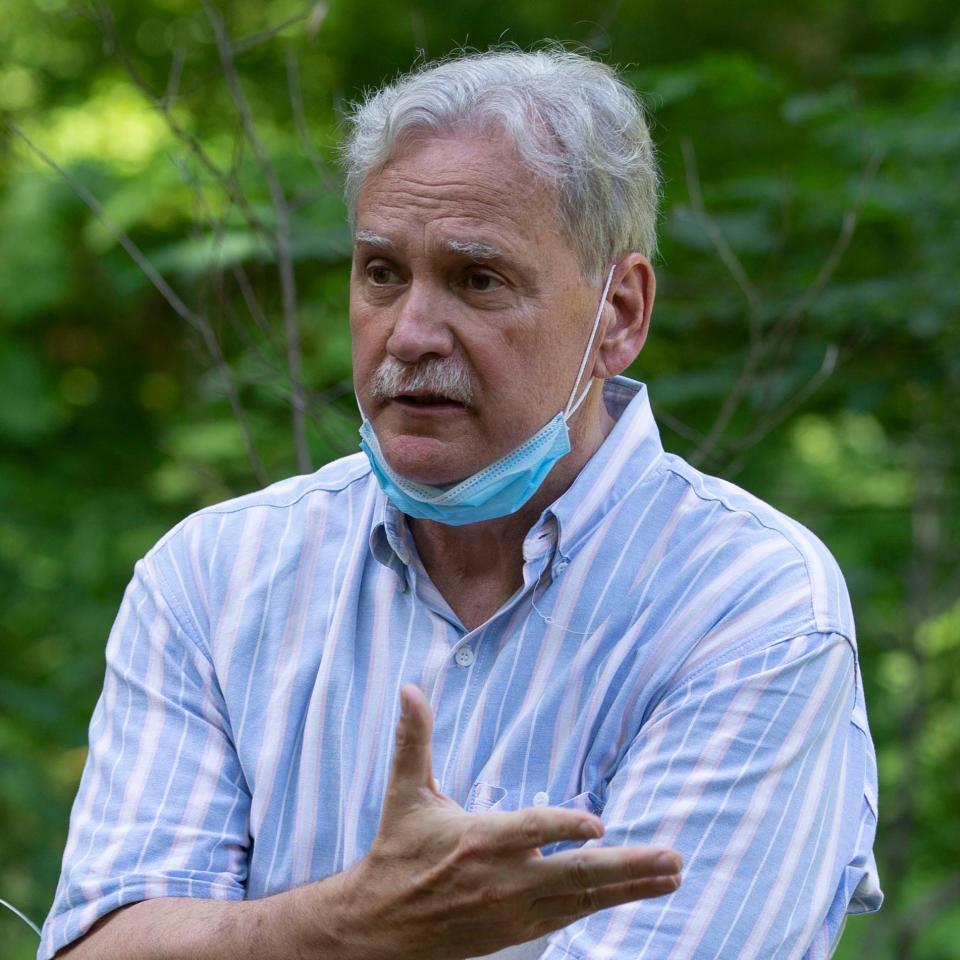Offshore wind farms off NJ, NY scrutinized over environmental impacts
LONG BRANCH — Gregory Cudnick owns the Fisherman's Headquarters tackle shop in Ship Bottom and fishes regularly, but he worries his livelihood is under threat if offshore wind developers forge ahead with plans to build turbines along the New Jersey coast.
"Anyone who has fished these waters in the summertime knows that it's just about better than a SeaWorld show," he told a group gathered Tuesday night in Long Branch, where they shared concerns about offshore wind's impacts on the environment.
Cudnick worried that fish would congregate around the wind turbine bases, which would make them easier to catch.
"Overfishing can happen fast, resulting in a closure of the fishery," he told the group assembled in a hotel conference room. "And then economic hardship follows."
The meeting was organized by Clean Ocean Action, an environmental organization that is pushing back against federal and state efforts to build offshore wind farms along the coast.

Cindy Zipf, the organization's executive director, said that while Clean Ocean Action does not oppose offshore wind power in principle, the organization does oppose the "scope, scale, speed and magnitude of what's being proposed out in the ocean right now."
Running east of Sandy Hook and Cape May, 11 different Atlantic Ocean lease areas are under consideration for wind turbine farms.
In the latest step toward development, the federal Bureau of Ocean Energy Management — which controls the lease areas and awards leases to wind power companies — is currently seeking public input on a roughly 1,400-page environmental impact statement focused on building offshore wind farms in a region called the New York Bight. The deadline to submit comments is Feb. 26.

As the evening's darkness descended over the nearby Atlantic Ocean, members of the group took turns at a microphone in the conference room. They recorded impassioned statements to the Bureau of Ocean Energy Management, hoping to move the federal bureaucracy in a different direction.
"The word 'bight' means an indentation in the coastal zone," Zipf, of Clean Ocean Action, told the crowd. "But these areas… are really off the Jersey Shore… And we really have always called this area that New Jersey / New York Bight, because it is a shared waterway."

Jim Hutchinson Jr. of Brick went to the microphone and called the projects "criminal."
"Defaming. Demoralizing. Degenerative. Dismissing," he said. "That is what the recreational and commercial fishing community has faced with this industrial offshore wind effort."
Experts from the Bureau of Ocean Energy Management held a public meeting in Toms River earlier this month to educate members of the public on the anticipated environmental impacts of developing the six lease areas in the New York Bight. At that meeting, experts answered questions about impacts on commercial and recreational fishing, the changing view from shore, and impacts on various marine animals.
Related: Six offshore wind turbine sites planned off Barnegat Light, draw large crowd to Toms River
Offshore wind projects are seen by proponents as an integral step in shifting the nation's energy production away from fossil fuels, a major contributor to greenhouse gas emissions, climate change and air pollution.
A supporter of offshore wind development, Phil Falcone of Long Branch took the microphone and spoke through the occasional snickers from the crowd.
"I'm a boater," he said. "I'm a sailor who's been blessed to almost touch the dolphins swimming, fishing, frolicking alongside our boat. I worry that fossil fuel-driven climate change is disrupting their environment."
Last month, New Jersey League of Conservation Voters Executive Director Ed Potosnak called offshore wind projects "a down payment in the fight against climate change and cleaning up our air, improving public health, and creating thousands of local union jobs that will strengthen New Jersey’s economy." The League of Conservation Voters has supported offshore wind development and said that marine animals face more threats from climate change than from wind farm development.
Jeff Tittel, an environmental advocate and former director of the New Jersey Sierra Club, a prominent environmental organization, said more work needs to be done to convince state residents that offshore wind is in their financial and environmental interests.

One problem is that offshore wind developers in New Jersey made plans to use giant turbines before the construction and transportation infrastructure was in place, Tittel said. Larger turbines also mean they are more easily seen from the coast, he said.
Going big means "the costs have gone up," Tittel said. "Because of this new technology, that may be better long term, but because it's new and it hasn't been mass-produced, and we have to build all this infrastructure for that, the costs have gone up and that becomes a real issue."
Offshore wind will not be able to meet all the state's power needs, particularly as more homes and vehicles transition to electric power over natural gas, oil and gasoline, Tittel said.
Lastly, construction of the turbine bases on the ocean floor will likely create noise pollution that could impact whales and marine animals, he said, noting it remains an issue that needs careful study.
"We have to make sure we also do it (develop wind farms) in a financially affordable way," Tittel said. "We have to take a very close look at potential impacts."
Written comments on the environmental impact statement of building offshore wind farms in the New York Bight must be received before Feb. 26 and can be mailed to: “NY BIGHT PEIS” and addressed to Chief, Division of Environmental Assessment, Office of Environmental Programs, Bureau of Ocean Energy Management, 45600 Woodland Road, VAM–OEP, Sterling, Virginia 20166.
Ocean environment: Finback whales thriving in waters from NY to Cape May
Amanda Oglesby is an Ocean County native who covers education and the environment. She has worked for the Press for more than a decade. Reach her at @OglesbyAPP, aoglesby@gannettnj.com or 732-557-5701.
This article originally appeared on Asbury Park Press: New Jeresy groups remain divided on offshore wind power impact

